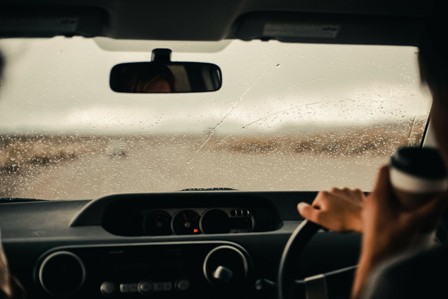EUGENE HERBERT
Recent research shows fatigued driving can be just as, and potentially even more dangerous, than driving under the influence.
One of the reasons for this is because of the lack of awareness that many drivers have about just how risky it is and even an underestimation of one’s level of drowsiness.
This emphasises the importance of increasing awareness and understanding of drowsy driving to reduce its occurrence.
Real change requires a comprehensive understanding of fatigued driving to motivate drivers to refrain from getting behind the wheel when drowsy. Below are 10 powerful facts that can help compel drivers to be wary of drowsy driving.
Drowsy driving stats from the USA:
- A study by the Centres for Disease Control and Prevention (CDC) found that one in 25 drivers admitted to falling asleep while driving within a 30-day study.
- According to a study by the AAA Foundation, 75% of consumer drivers reported having low levels of perceived drowsiness when they were actually moderately or very drowsy. A measure of high levels of drowsiness is when a drivers’ eyes closed for a quarter of a minute in a minute interval.
- A study conducted on commercial vehicle drivers found that 13% of these drivers that were involved in a crash were fatigued at the time of a collision
- During the study by the AAA Foundation, it was discovered drowsy driving is more common between 9pm and 6am.
- The same study found that, despite having the opportunity to rest, drivers would forgo a break because they misjudged their level of fatigue.
- Furthermore, of those that did feel drowsy, 75% elected to continue driving and skip a break.
- The Federal Motor Carrier Safety Administration says three out of four drivers reported making at least one driving error while fatigued.
- Most drowsy driving-related accidents involve motorists moving off the road at high rates of speed, often with no evidence of braking.
- The National Highway Traffic Safety Administration(NHTSA)says sleepiness increases reaction times, making physical or mental reactionsto stimuli more difficult.Additionally, the longer you are sleepy behind the wheel, the greater the impairment to judgment.
- Sleep deprivation can mirror the effects of drunkenness. In one study, some sleep-deprived participants performed equal to or worse than drunk participants with a blood alcohol concentration (BAC) of 0.05% when performing certain tasks.
These facts will provide powerful motivation to drivers to be more aware of their drowsiness levels and to then take it seriously. It is only when drivers truly understand the risk, they place themselves at, will there be a drive to eliminate this risk as far as possible.
©Copyright MOTORING WORLD INTERNATIONAL. All rights reserved. Materials, photographs, illustrations and other digital content on this website, may not be reproduced, published, broadcast, rewritten or redistributed in whole or in part without prior written permission from Motoring World International
Contact: editor@motoringworldng.com





